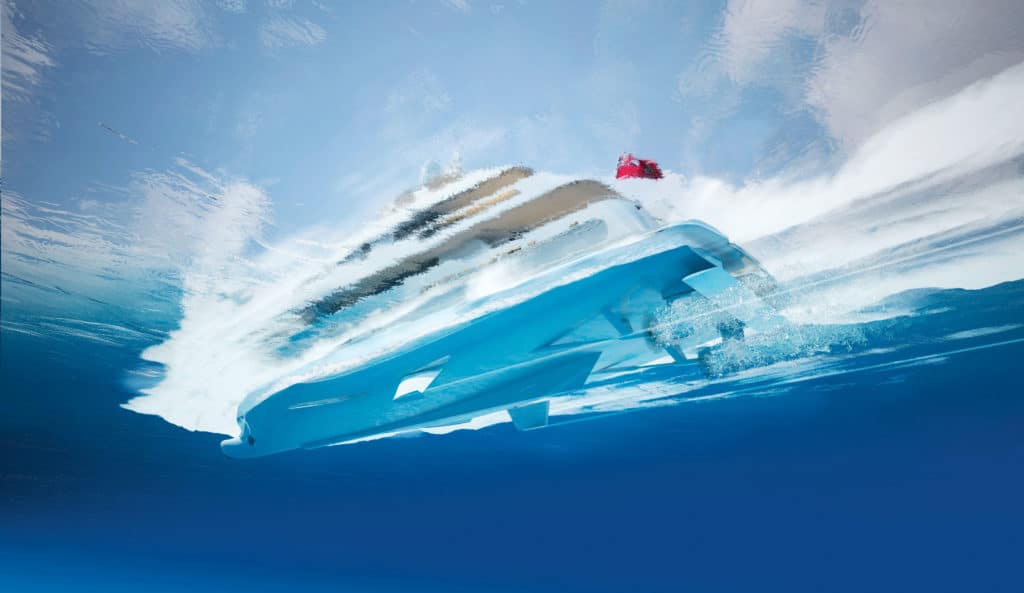
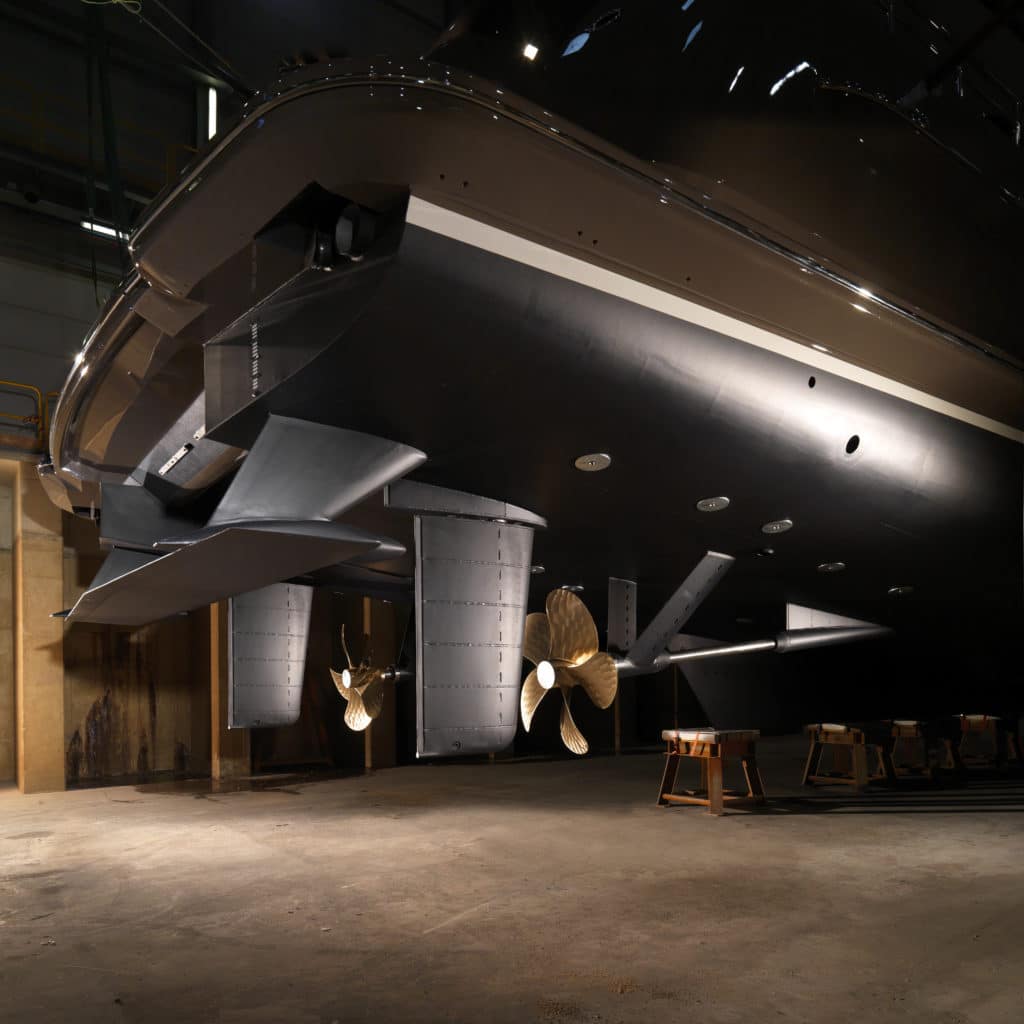
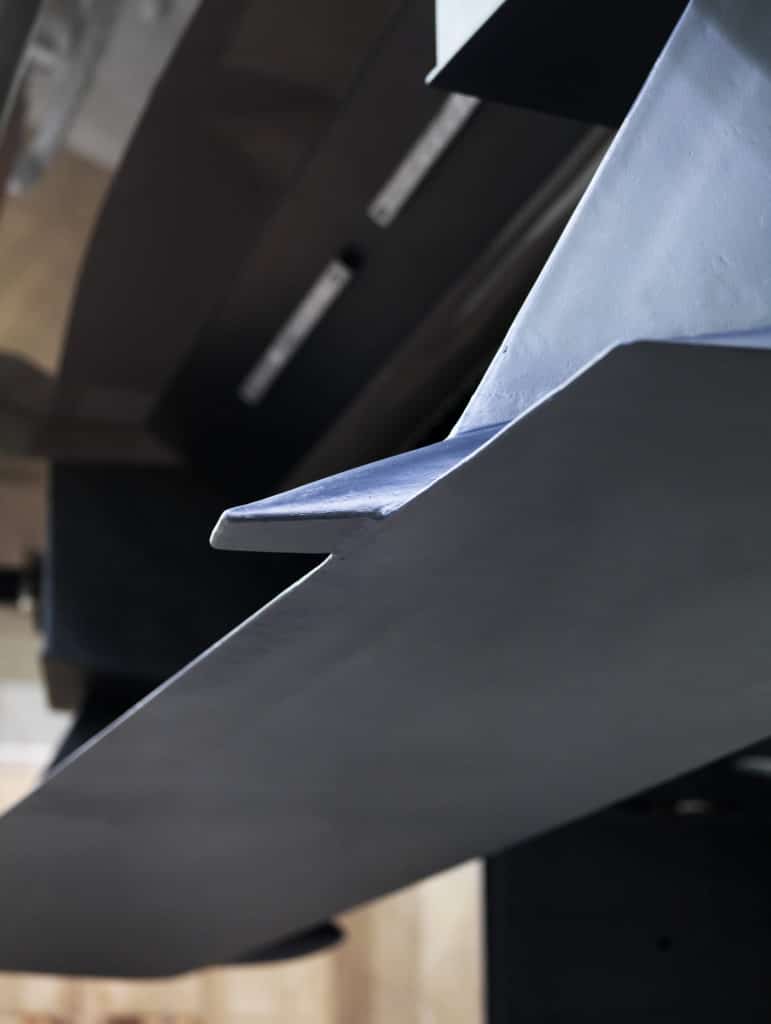
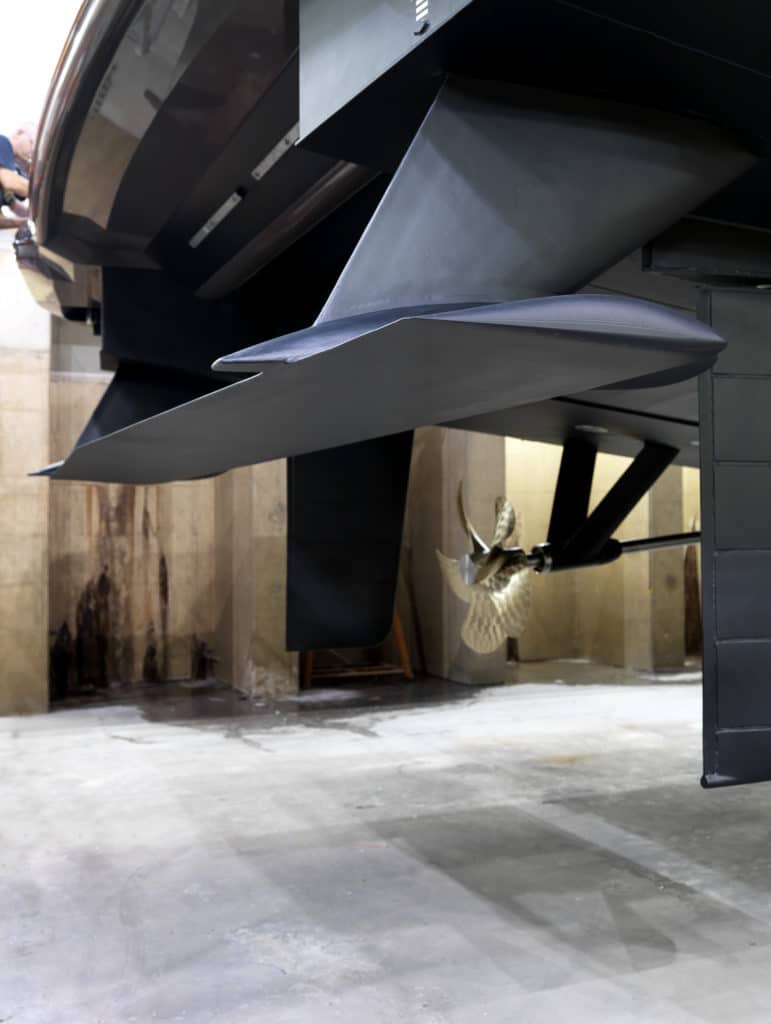
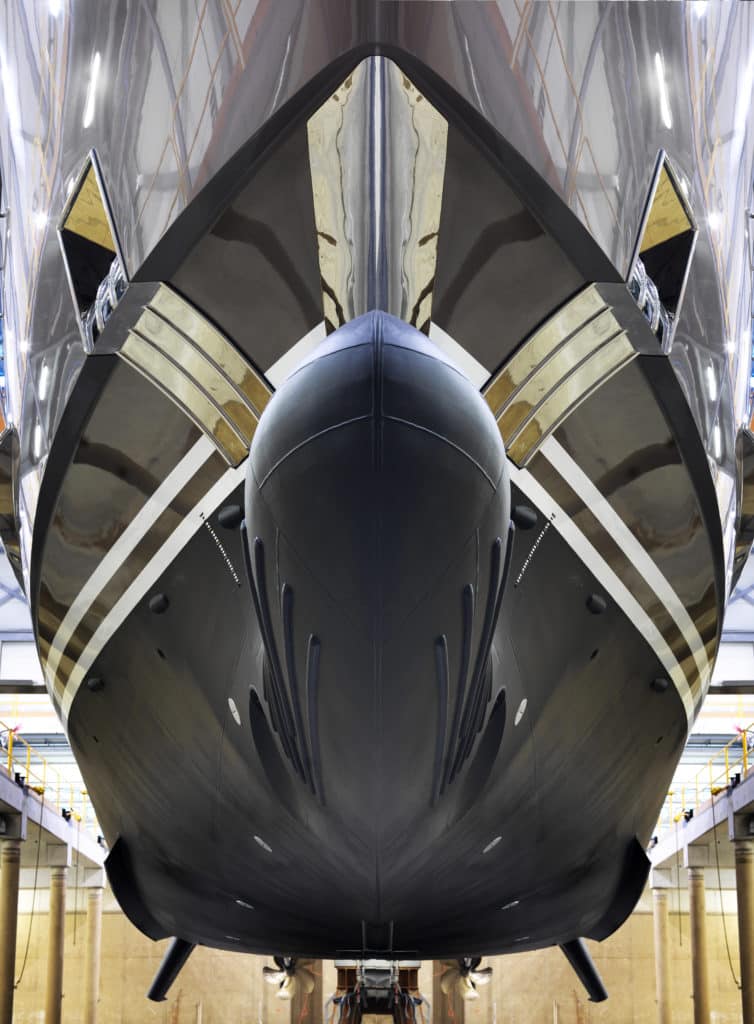
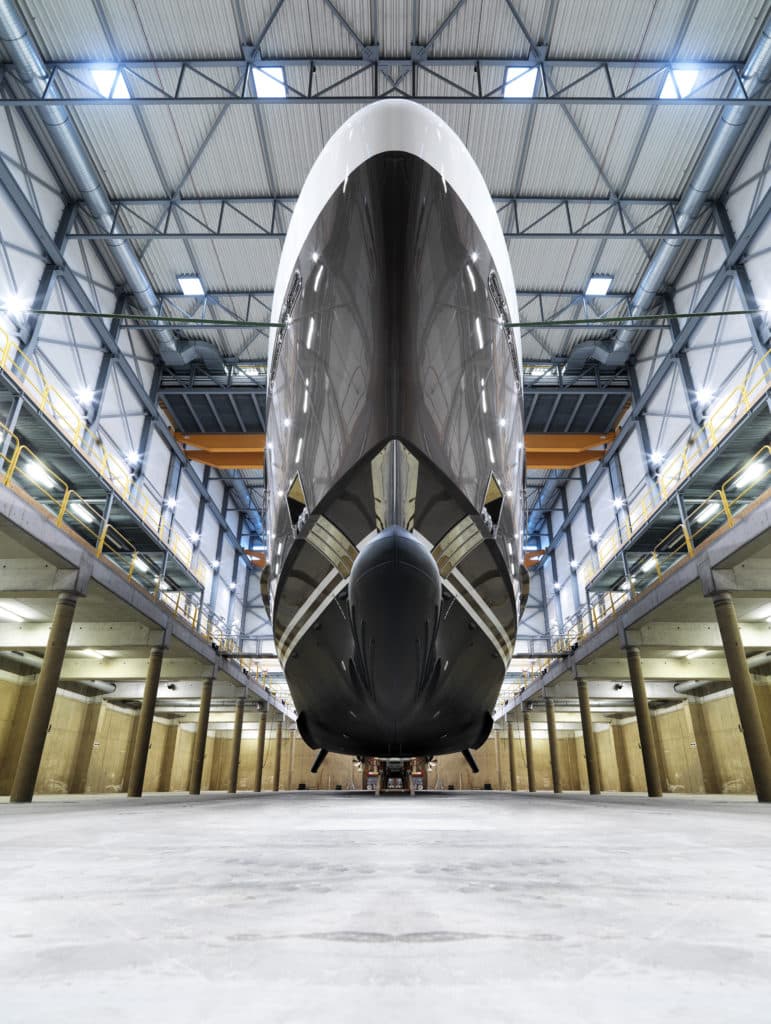
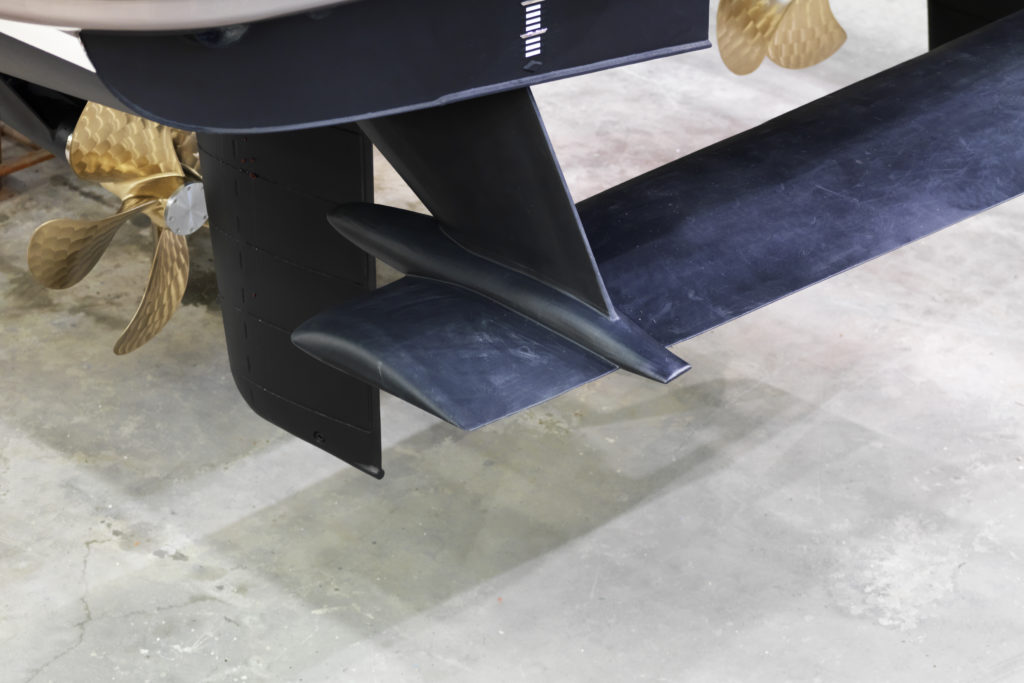
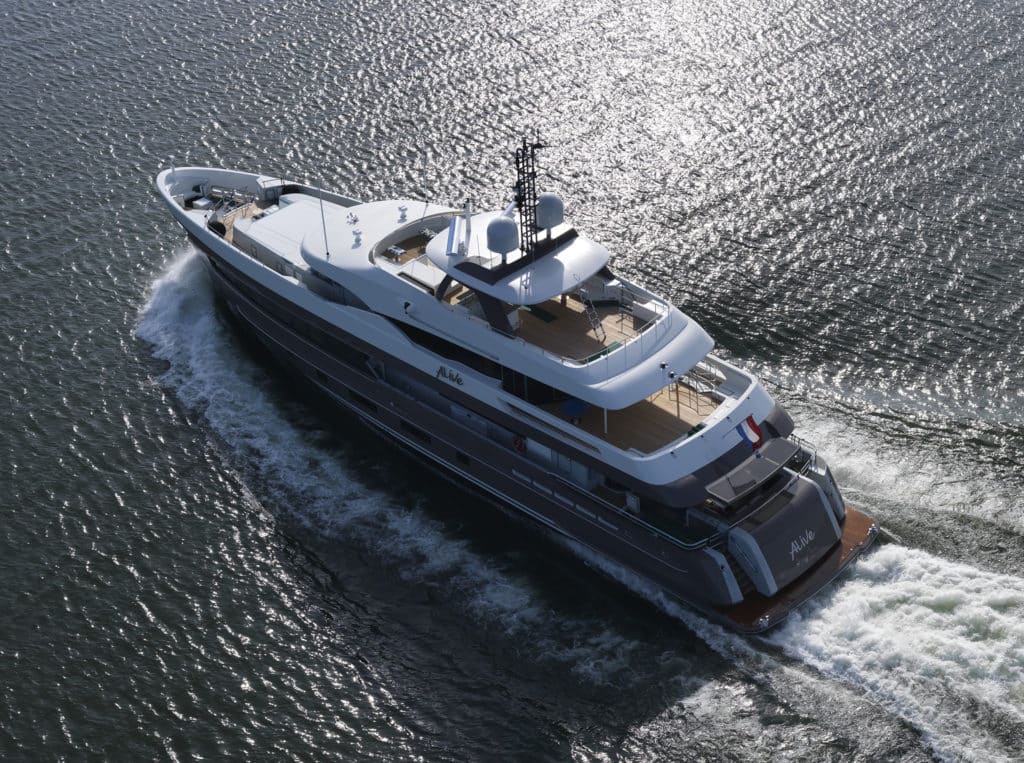
Peter Van Oossanen, a Netherlands-based naval architect, came up with the idea for the Hull Vane while doing model tests for America’s Cup sailing yachts. He was measuring the forces generated on horizontal “winglets” attached to the rudder, and he noticed the winglets produced forward thrust. Maximizing that thrust, he reasoned, would reduce negative interaction with the hull, leading to more efficient cruising. He used computational fluid dynamics software to optimize the concept and make it commercially viable.
“The Hull Vane improves the hydrodynamic efficiency of ships sailing at high-displacement speeds, just like the bulbous bow does,” says Bruno Bouckaert, global sales director for Hull Vane. “Significantly less power is needed to propel the ship, which means lower fuel consumption, smaller main engines to be installed and a longer range for the same tank volume.”
Heesen’s 139-foot Alive is the first yacht to have Hull Vane technology, coupled with the builder’s Fast Displacement Hull Form. Heesen says the yacht achieves a 16-knot top speed with 35 percent less power than other yachts her size.
Needing less power, Bouckaert says, means being able to install smaller engines and fuel tanks, and thus giving more interior volume over to guest areas. On yachts about 130 feet and longer, he adds, the Hull Vane’s cost is often offset by the reduced propulsion expense. “In such a case,” he says, “the Hull Vane makes the whole design smarter at no extra cost.”








